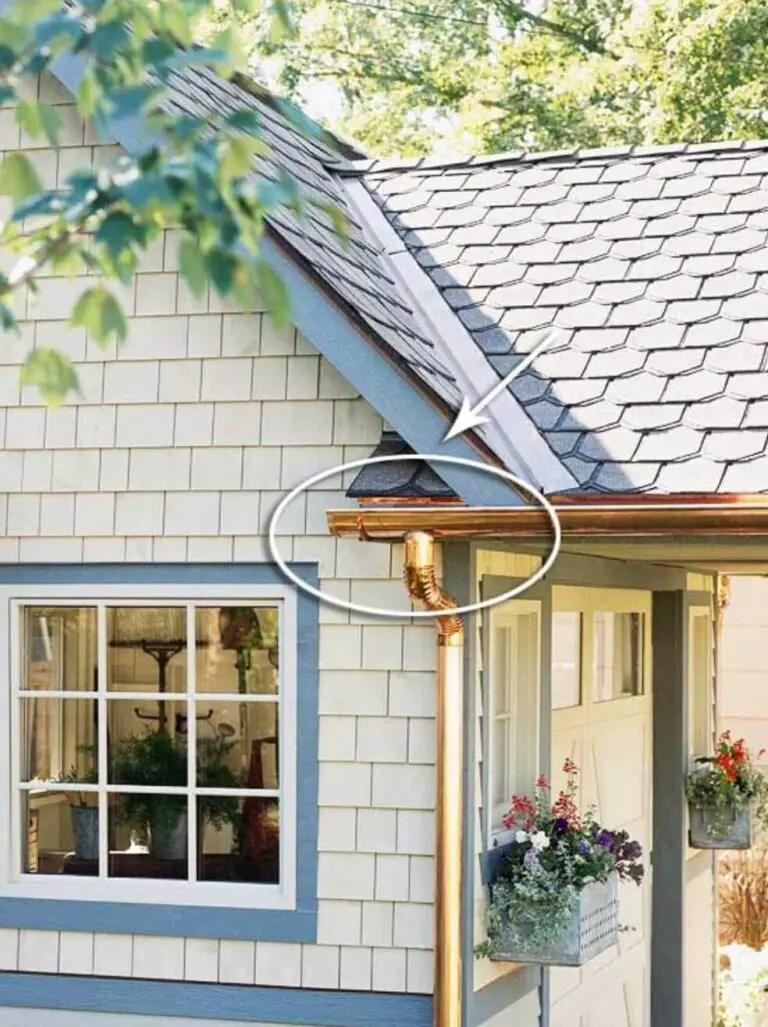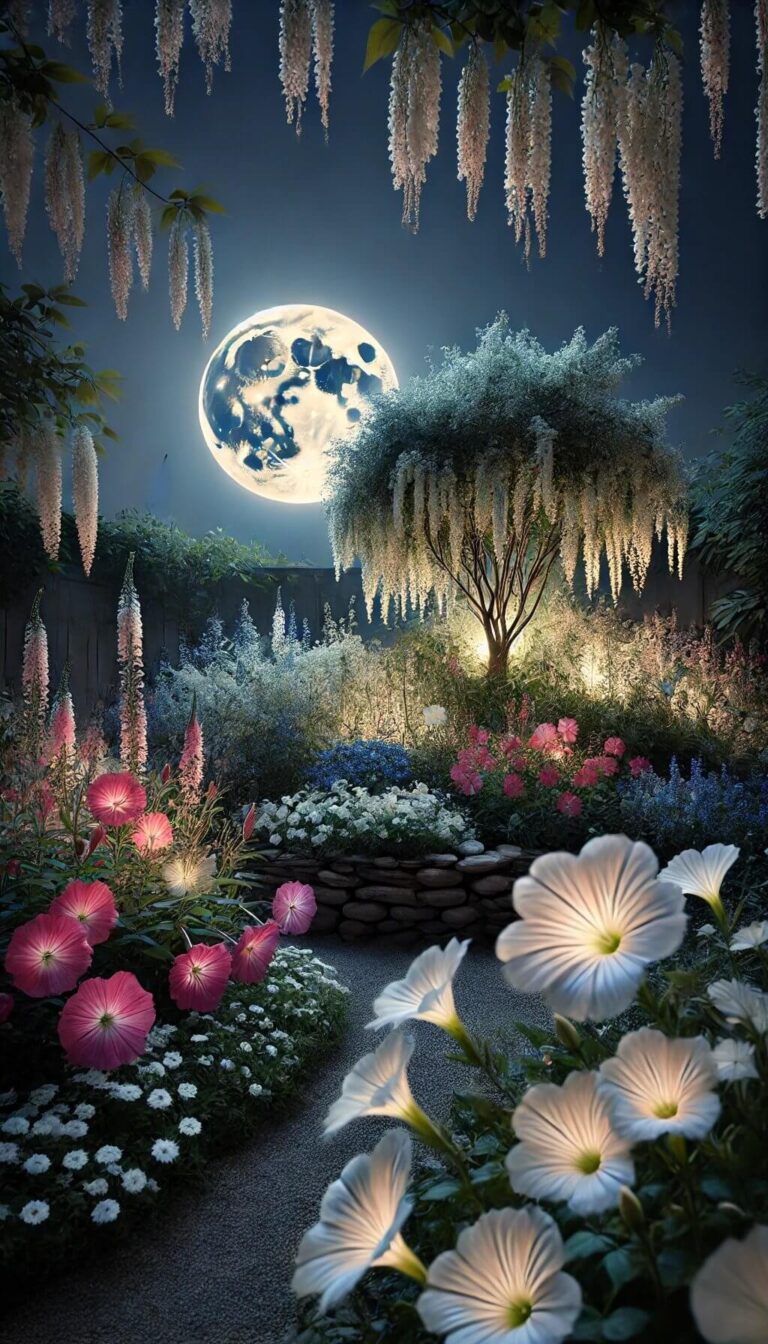15+ Innovative Stone Edging Ideas For A Polished Landscape Look
The humble garden edge is often overlooked, but it’s actually a crucial element in creating a beautiful and functional outdoor space. When done right, stone edging can elevate your garden from ordinary to extraordinary. Beyond keeping mulch in place, stone edging offers a multitude of benefits. For starters, it’s incredibly durable, able to withstand the elements with ease. It also helps to keep weeds at bay and prevent soil from spilling onto your lawn.
Plus, each type of stone brings its own unique texture and color to the table. From sleek granite to rugged fieldstones, there’s a world of options to choose from. Want to add a touch of sophistication? Granite is a great choice. Looking for something more down-to-earth? Fieldstones might be just the ticket. Let’s explore some of the most inspiring stone edging ideas to enhance your garden’s edges.
15 Inspiring Stone Edging Ideas to Enhance Your Garden’s Edges
Classic Cobblestone Edging
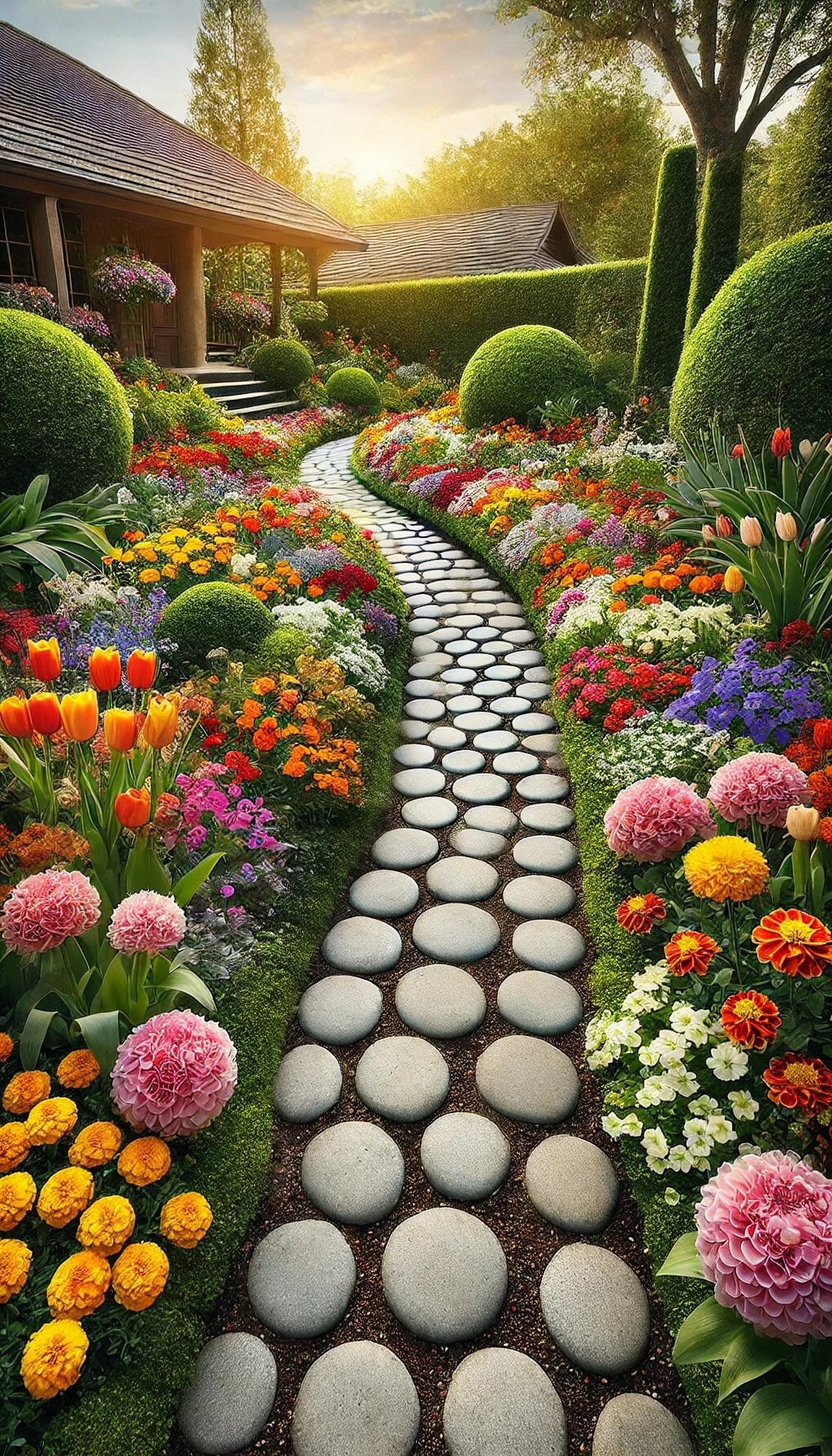
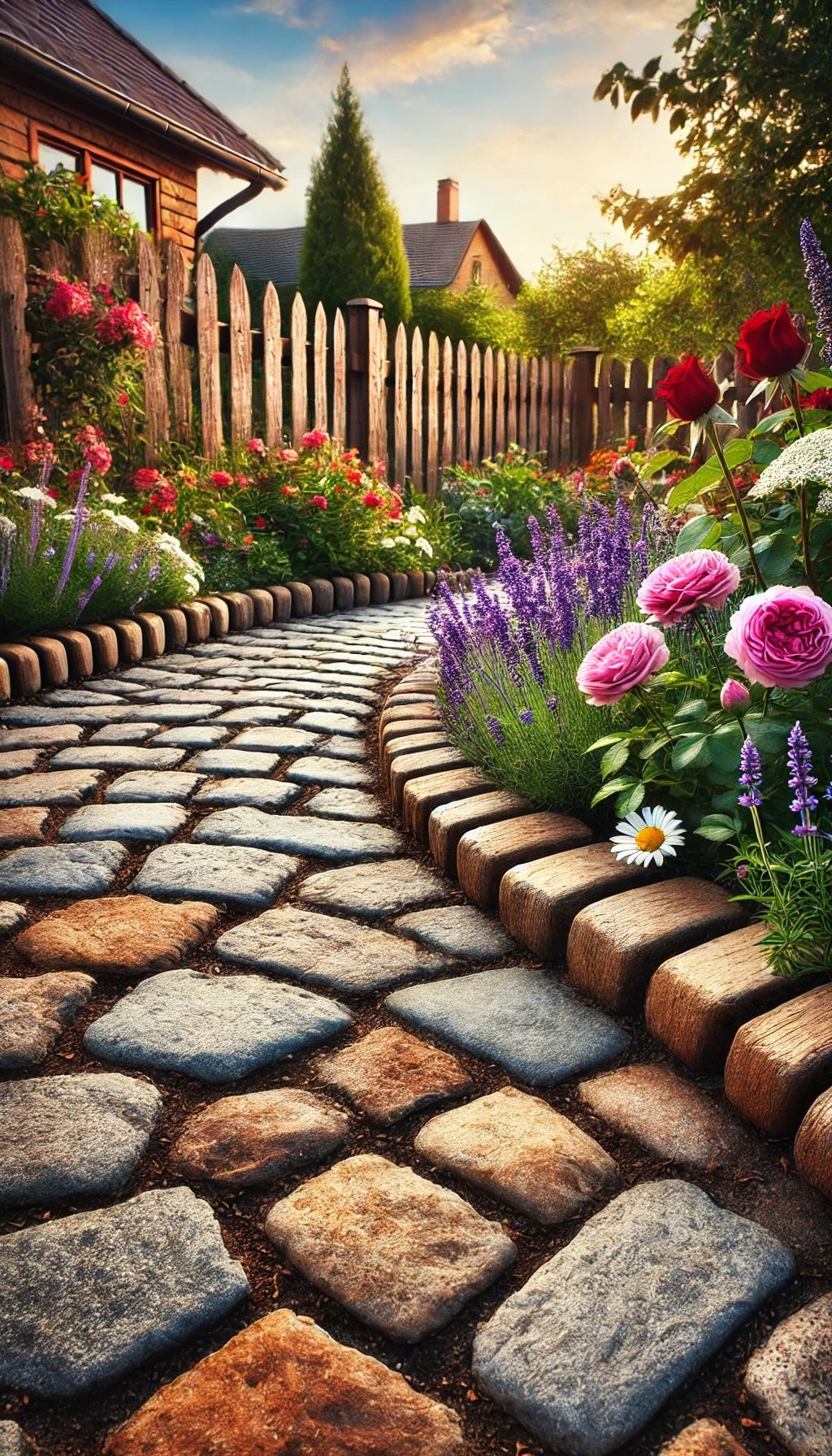
When it comes to achieving a timeless look in your garden, cobblestone edging is an excellent choice. The rounded, often irregular shape of these stones exudes a sense of old-world charm that’s hard to replicate with modern materials. Installing cobblestones isn’t a daunting task; simply dig a trench, arrange the stones in a visually appealing pattern, and fill in any gaps with soil or sand.
Once in place, cobblestones seamlessly blend with flowering annuals or perennials, adding a classic touch that’s particularly well-suited to cottage-style gardens. According to renowned garden designer Paula Hayes, the value of cobblestone edging extends beyond mere aesthetics; it’s also about creating a sense of history and storytelling in your own backyard.
Rustic Fieldstone Edging
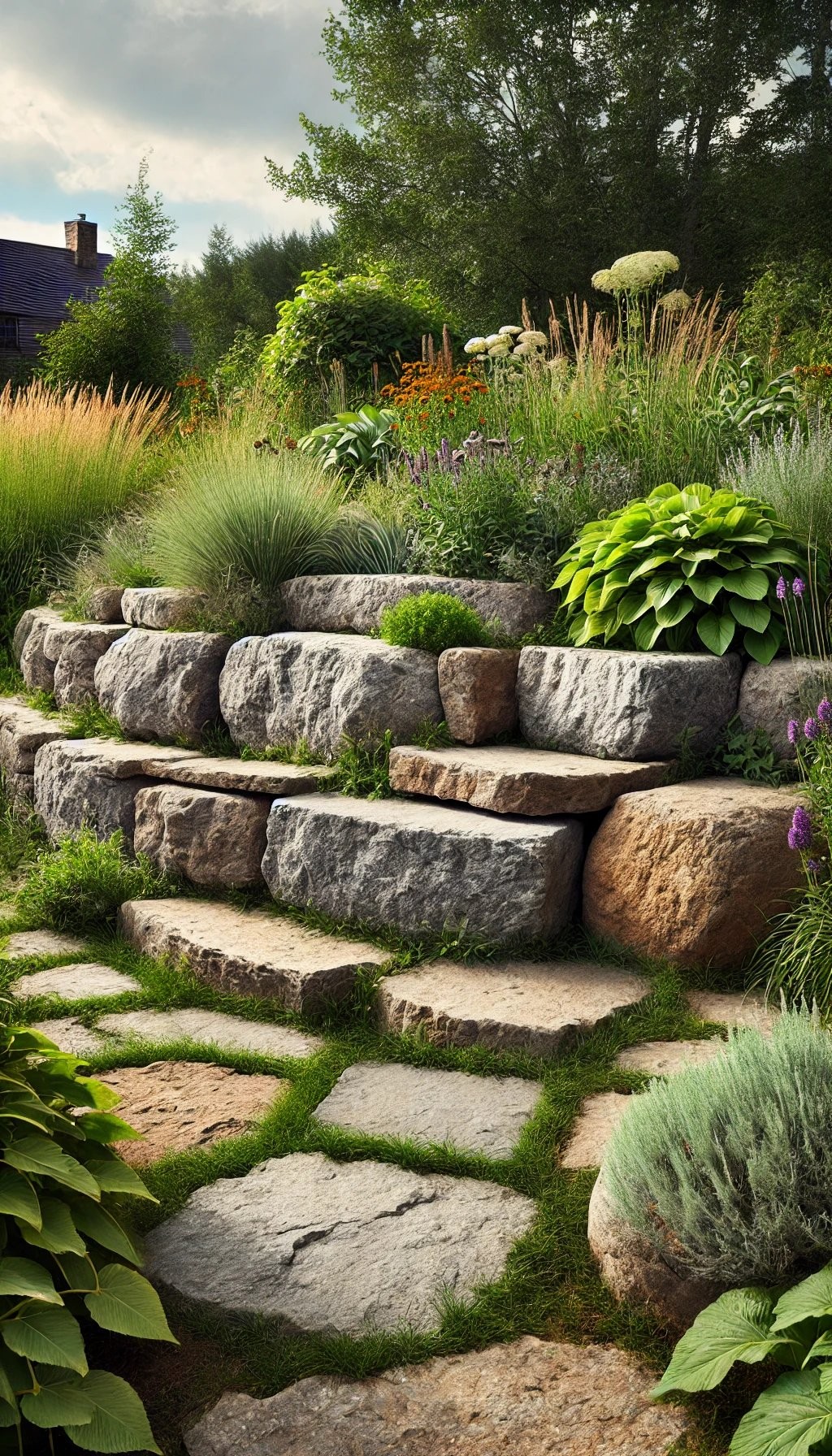
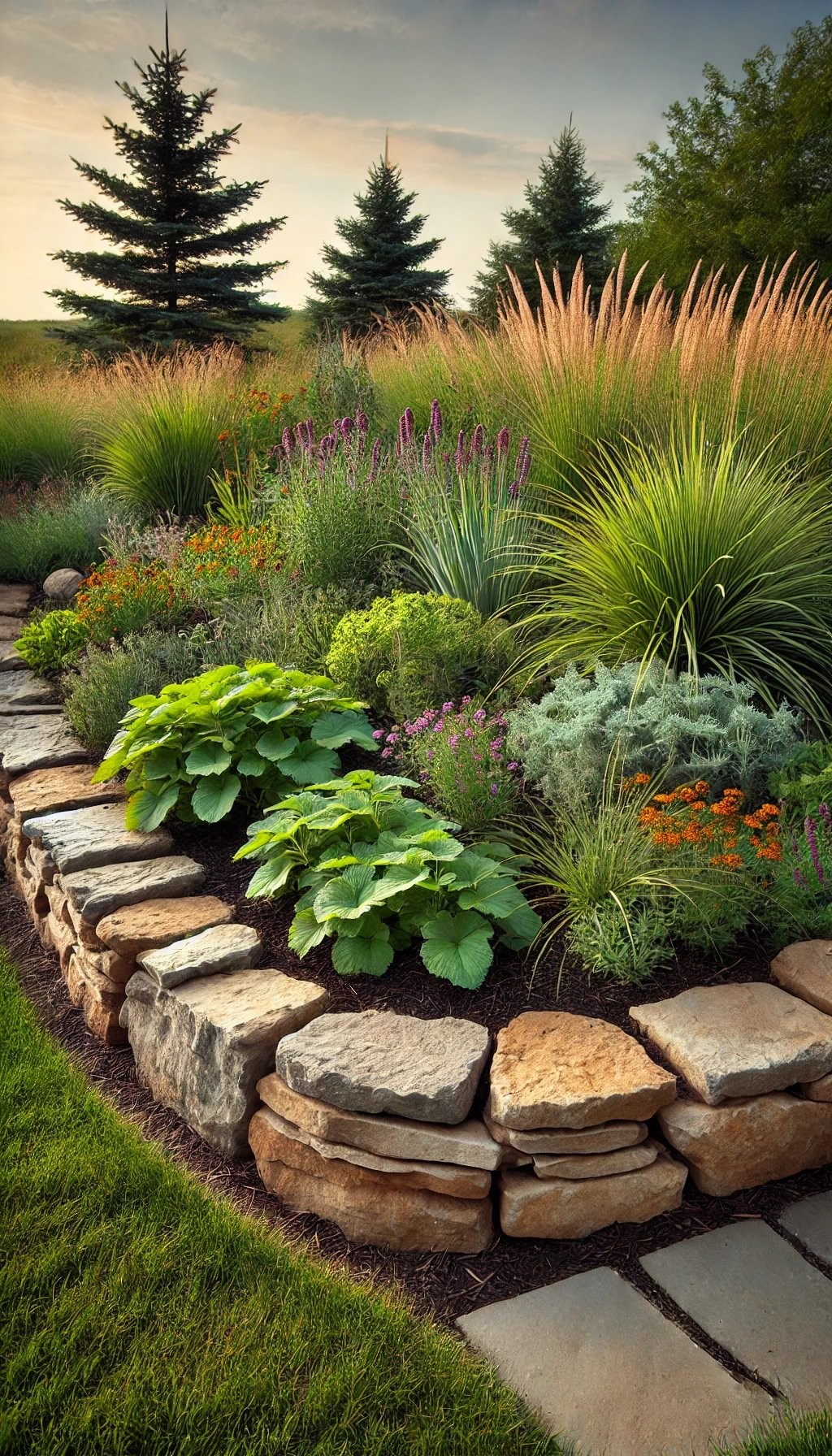
To achieve a relaxed, ‘just another part of the landscape’ ambiance in your garden, consider incorporating fieldstones into your design. These rustic stones have a unique ability to blend seamlessly with their surroundings, creating a charming and effortless look. The best part? They require no mortar, making it easy to create a natural border around your wildflower gardens or any other space you want to cultivate a sense of freedom.
According to renowned garden expert Mark Cullen, fieldstone edging is all about enhancing the natural flow of your garden, allowing you to create a harmonious and organic landscape that feels as though it’s simply a part of the surrounding environment.
Elegant Limestone Edging
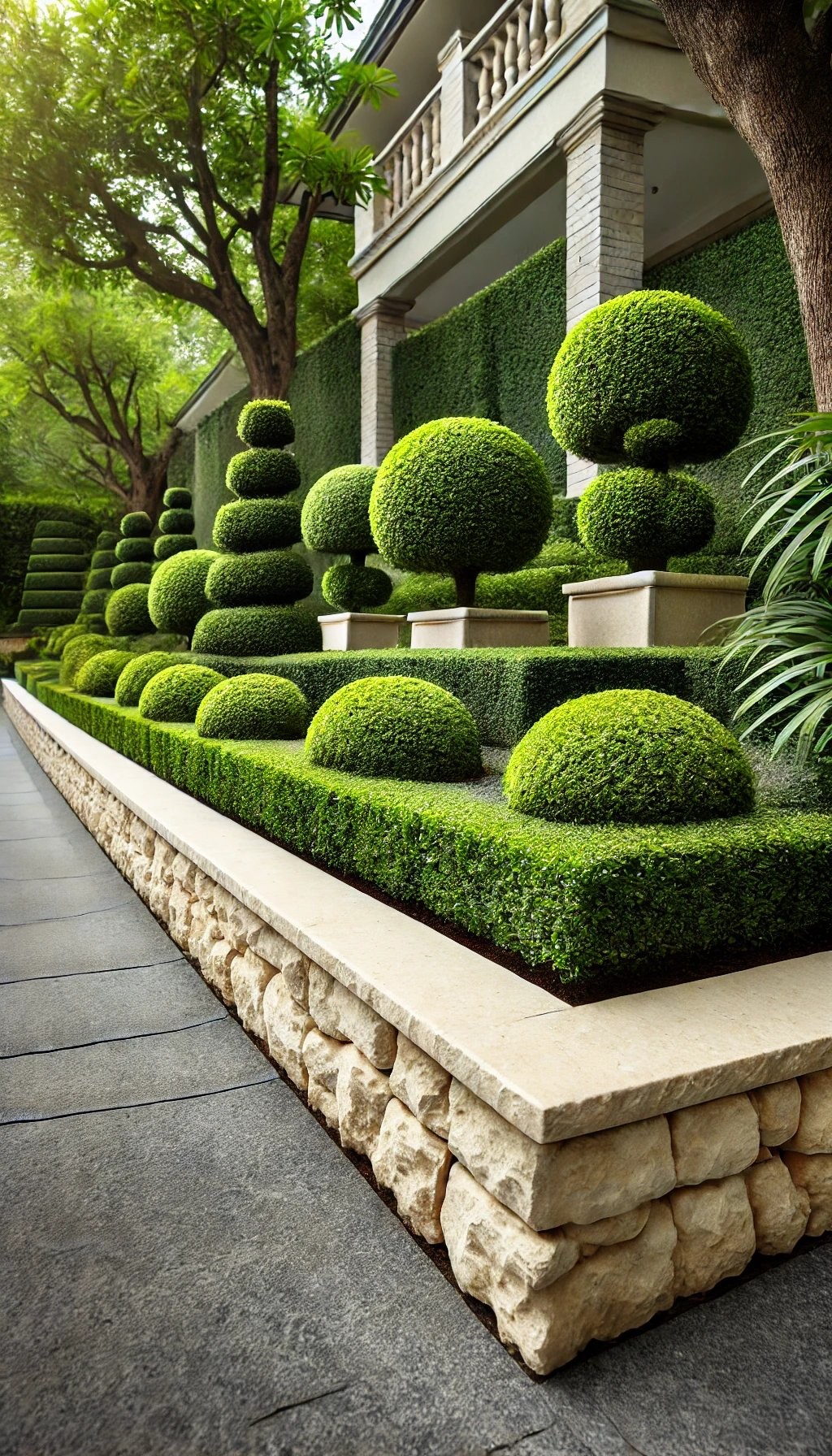

Elegance is effortlessly achieved when limestone is the chosen stone. Its refined edge creates a clean and defined look, making it an ideal choice for formal garden settings. The process of laying limestone involves preparing the ground and carefully fitting the stones together to produce a smooth finish. This beautiful combination of stone and structured plantings can be perfectly complemented by manicured lawns.
Limestone edging has the ability to bring a sense of order and refinement to any outdoor space, as noted by landscape architect Jane Brown, who remarks that limestone’s smooth lines invite a serene garden atmosphere.
Modern Slate Edging
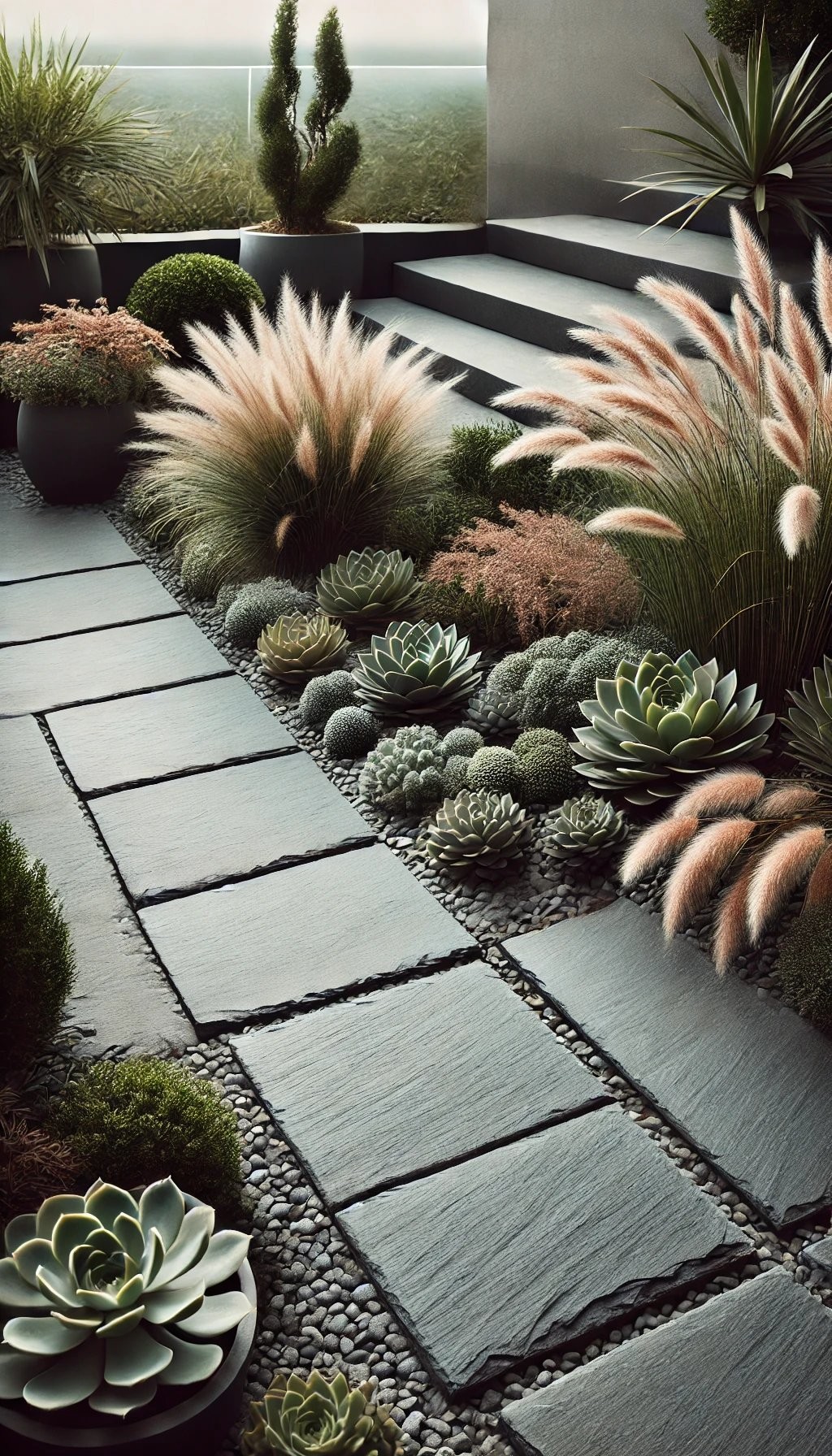

To give your garden a modern flair, consider incorporating slate edging into your design. Its clean, flat texture and diverse color palette can greatly enhance the contemporary appeal of your outdoor space. One of the benefits of using slate edging is its ease of installation – simply lay the pieces edge-to-edge in a shallow trench to achieve a seamless look.
This stylish option pairs particularly well with minimalist gardens, succulents, and ornamental grasses, adding a touch of sophistication and uncluttered elegance to your landscape.
Versatile Flagstone Edging
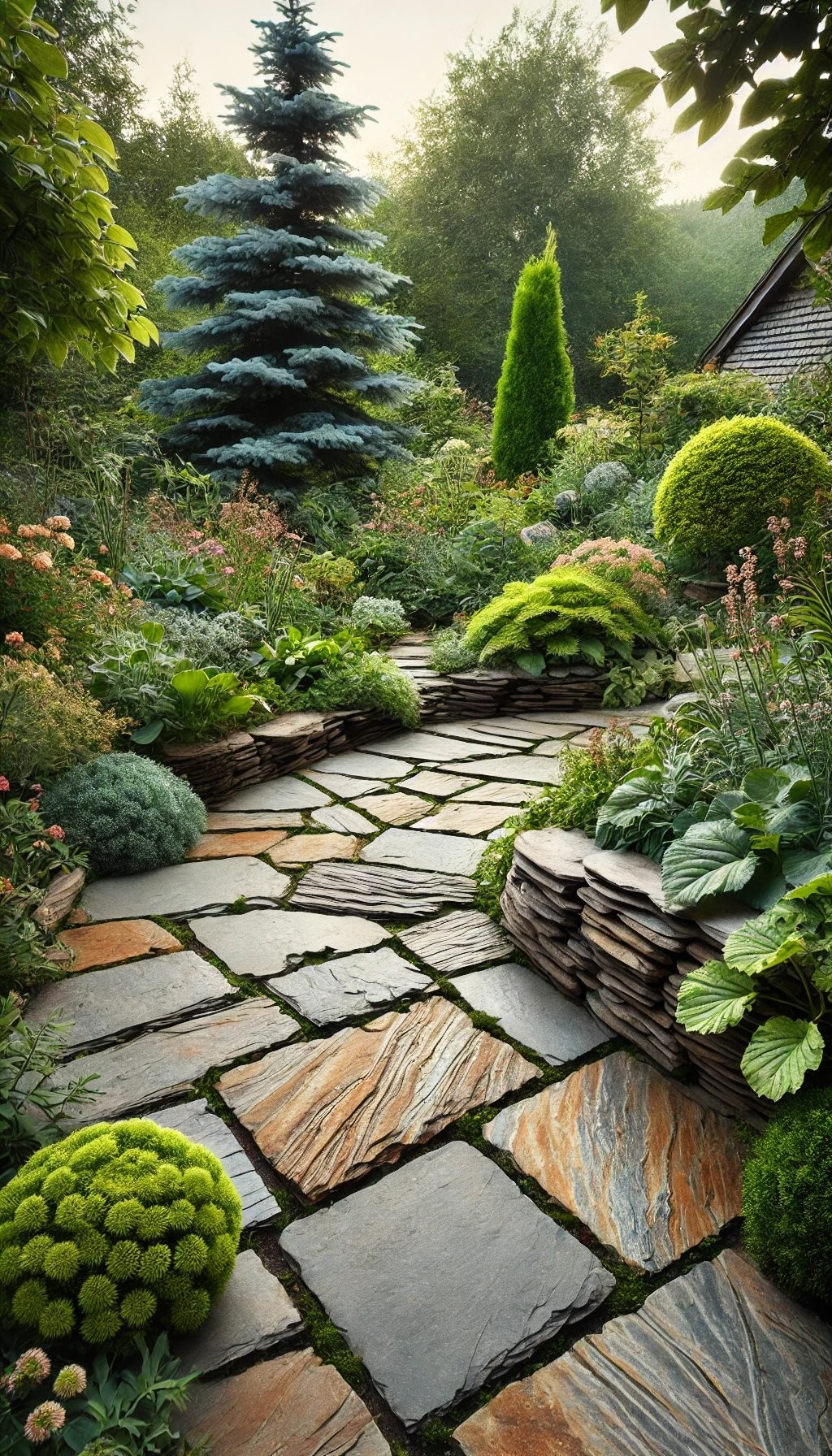
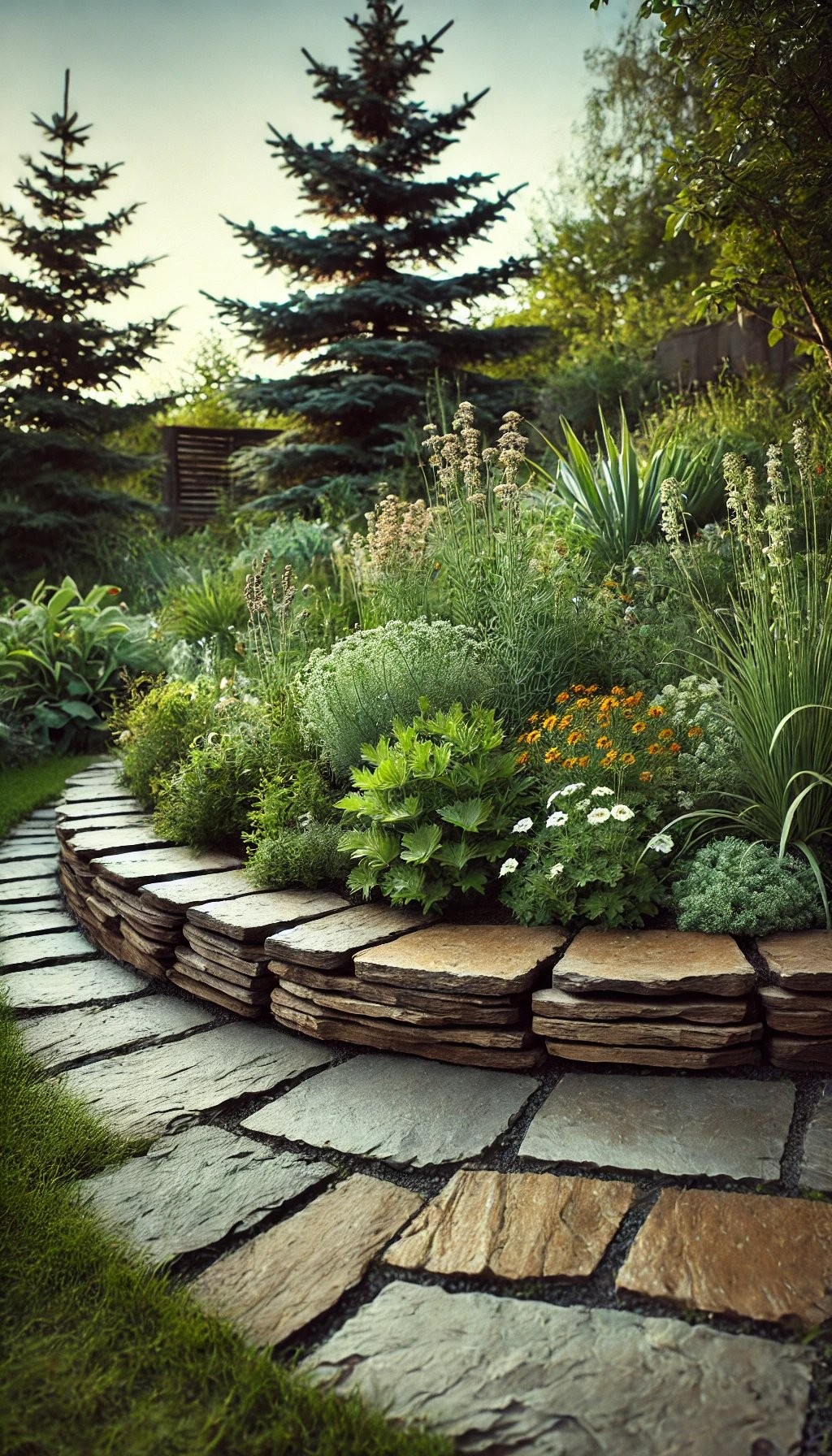
If flexibility is your top priority in garden design, flagstone is an ideal choice. This versatile flat stone boasts a natural appearance and an impressive range of shapes and sizes, making it suitable for various types of gardens. To create stunning flagstone edging, simply lay the stones along the garden border, ensuring they fit together snugly.
The beauty of flagstone edging lies in its ability to seamlessly blend with diverse garden styles, from traditional English paths to rustic landscape designs. According to landscape professional Alice Morse, ‘Flagstone is the ultimate problem-solving tool for edging; adaptable and dependable.’ Its versatility makes it a popular choice among garden enthusiasts.
Natural Granite Edging

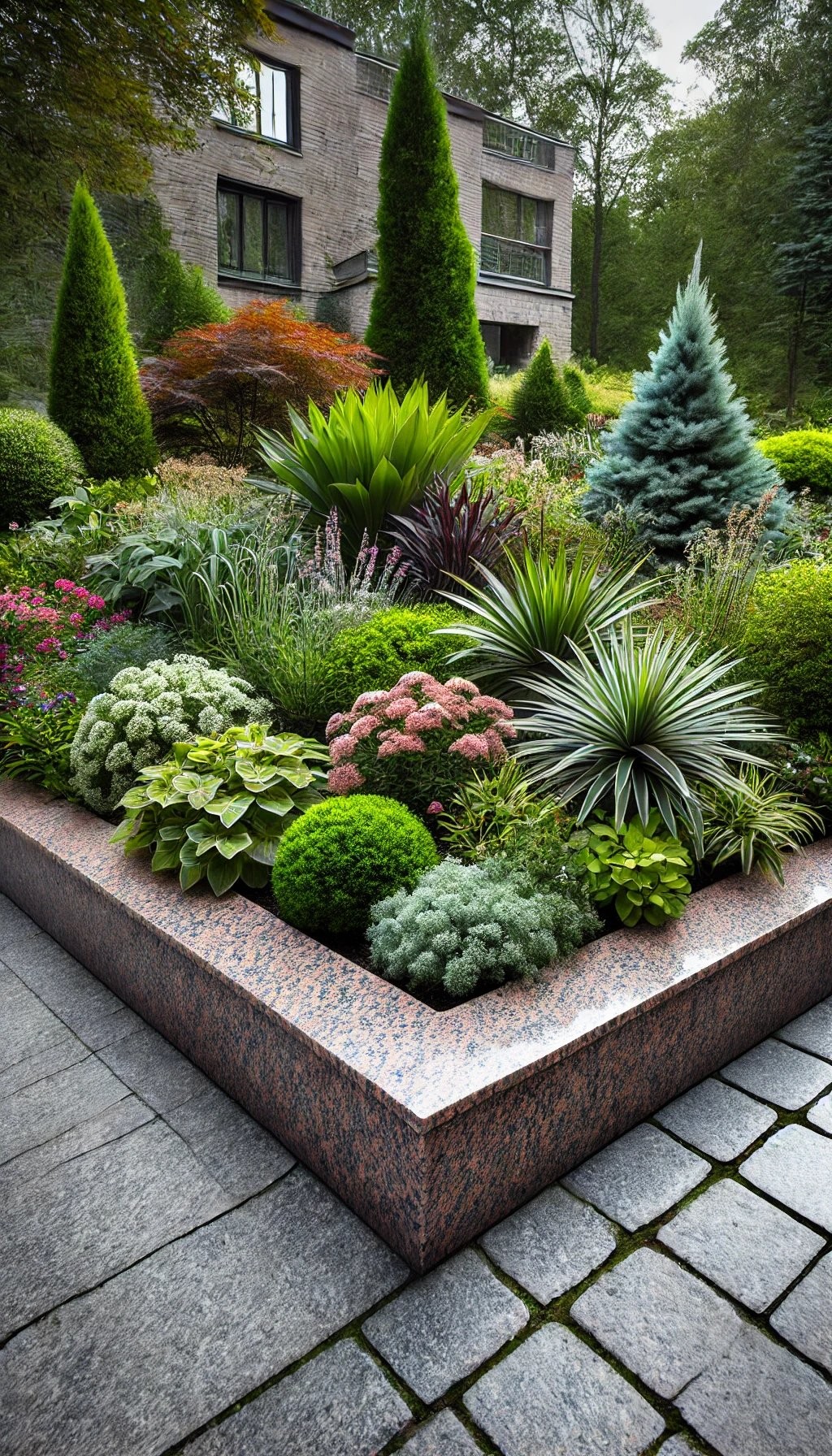
For a low-maintenance and durable option, granite is an excellent choice for gardeners seeking a long-lasting solution. When installing granite edging, start by digging a trench and placing the blocks side by side to create a seamless look. With its high-gloss finish, granite can elevate both formal and informal gardens alike. As Tom Howard, a renowned garden designer, notes: ‘Granite is the epitome of durability in gardening.
‘ This sought-after material offers a refined finish that stands the test of time.
Budget-Friendly Crushed Stone Edging
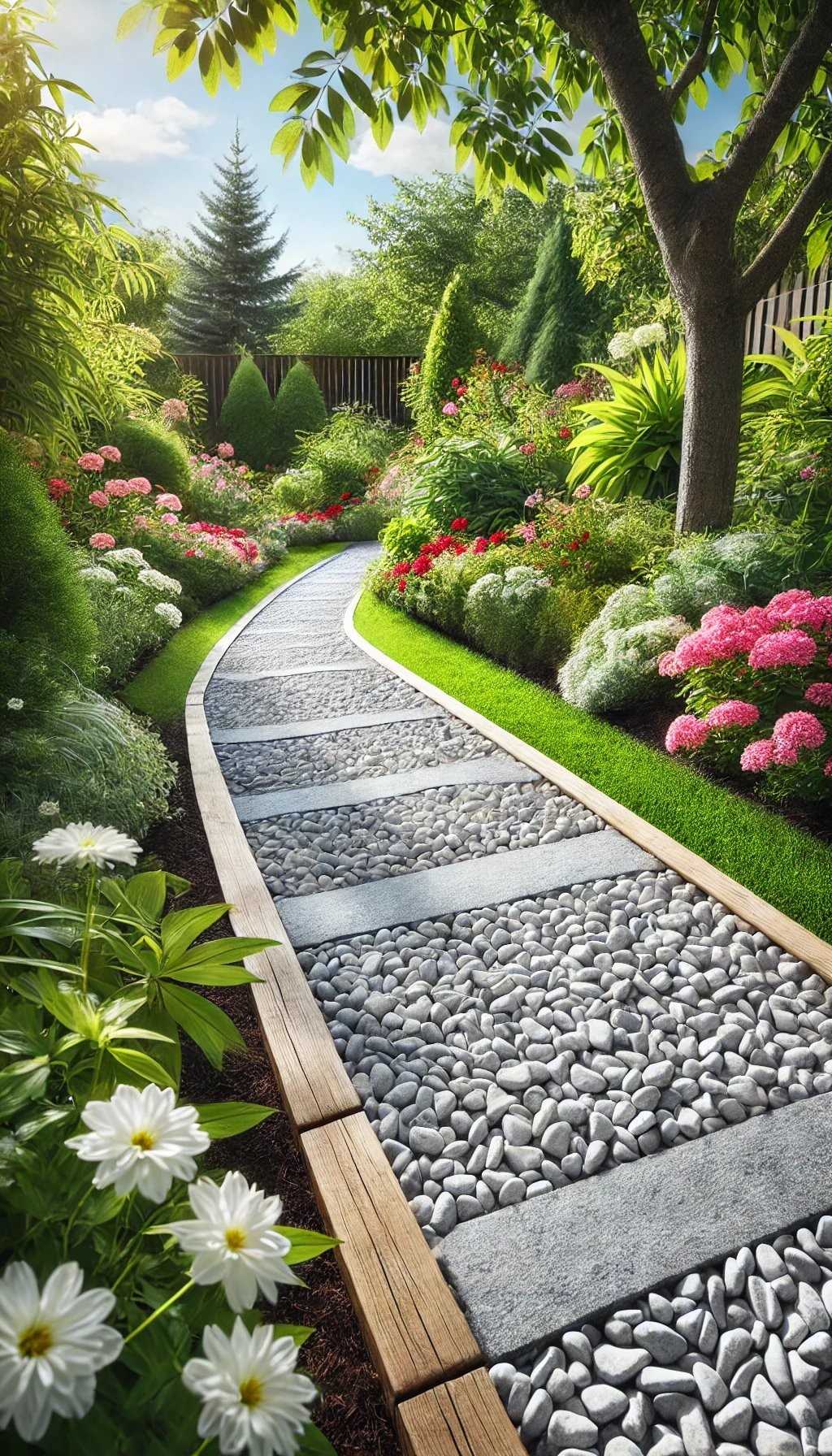
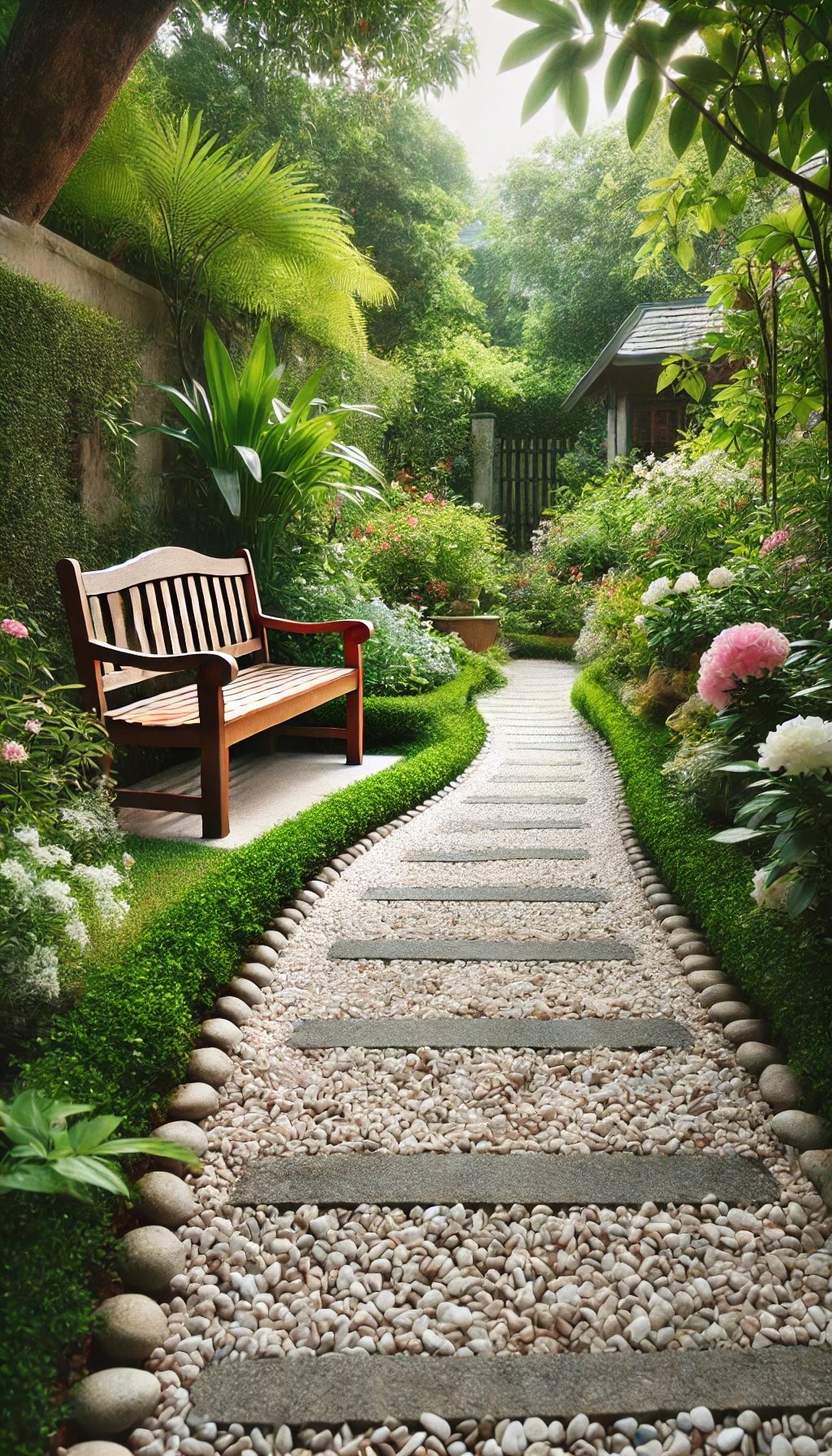
Watching your budget can lead to surprisingly stylish results. Crushed stone edging, for instance, is an affordable yet impactful way to elevate your garden’s visual appeal. By scattering crushed stones along your borders, you can create an instant makeover that’s perfect for casual spaces like cottage gardens or any area that craves a light, airy feel. This versatile material not only adds aesthetic value but also serves as a natural deterrent against weeds and soil erosion.
According to horticulturist Ella Field, ‘Crushed stone brings a breezy simplicity to garden designs’, making it an attractive option for those seeking a low-maintenance yet visually appealing solution.
Timeless Brick Edging
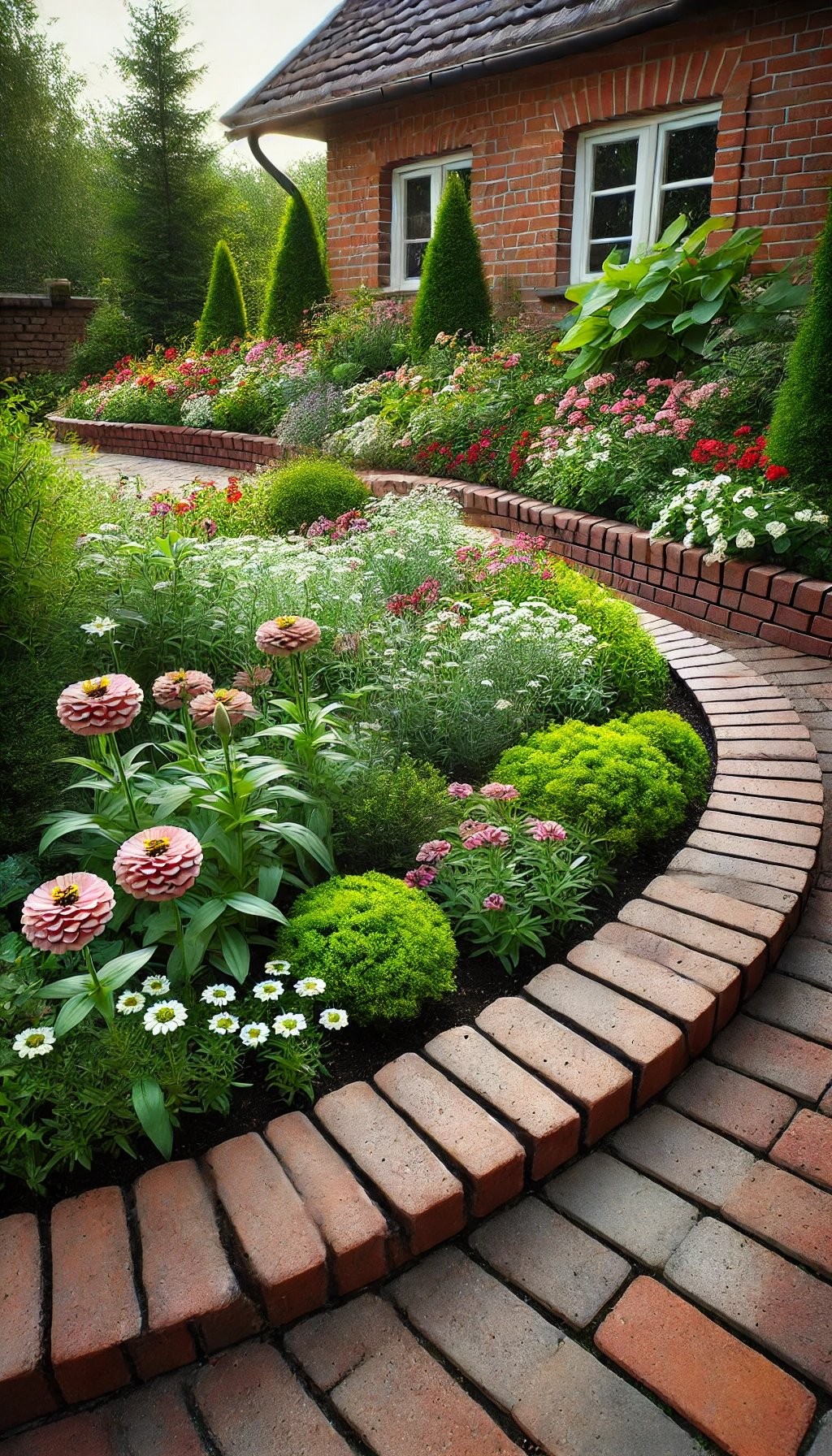
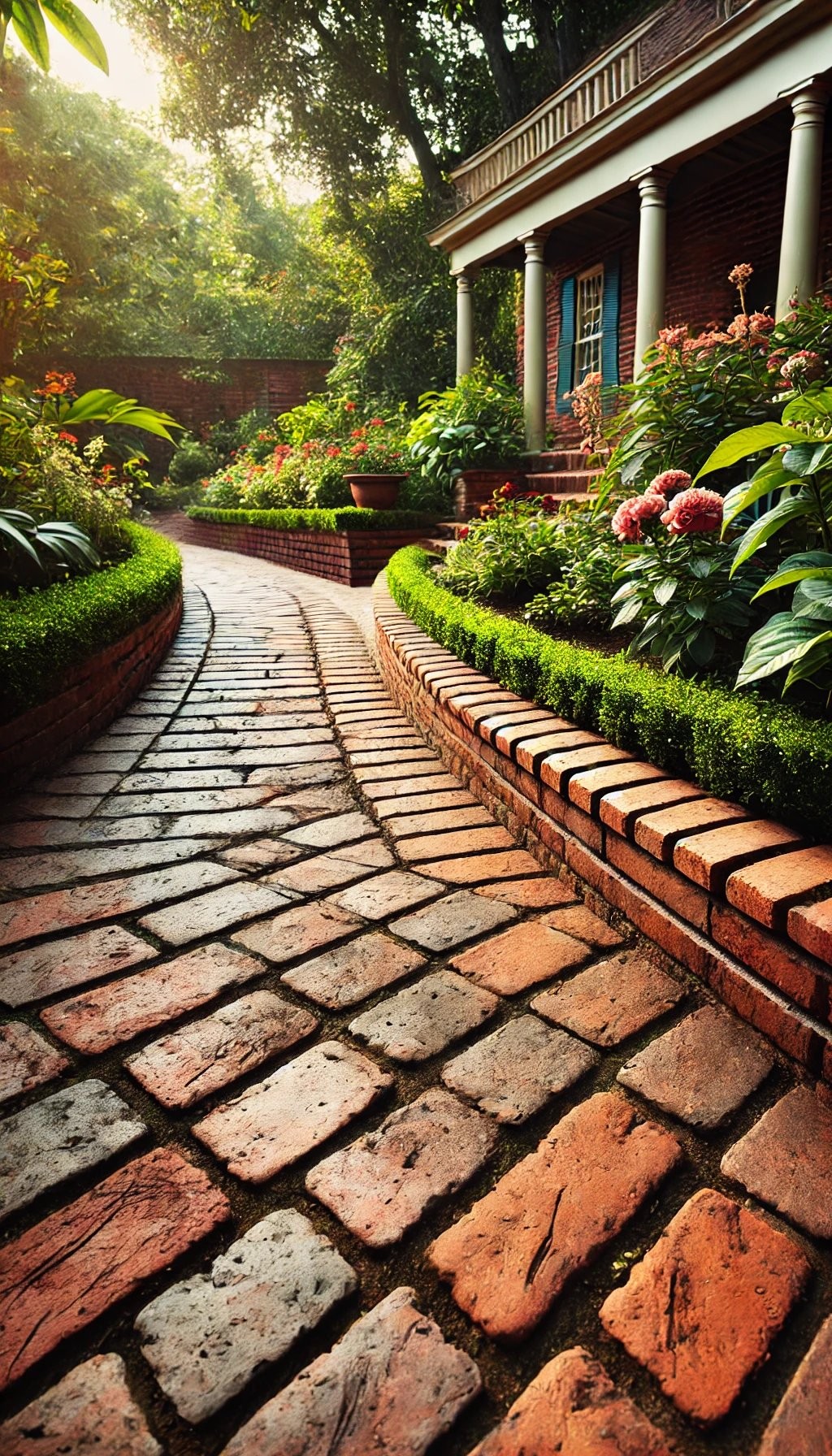
The quintessential traditional touch is achieved through the use of brick edging, where bricks are laid out in a linear or curved fashion along garden beds. This approach offers a sturdy barrier against encroaching grass and pests, making it an effective solution for any outdoor space. While traditionally associated with colonial and formal garden styles, brick edging can seamlessly integrate into a variety of settings that require a neat and clean aesthetic.
As landscape architect Jane Lively notes, ‘Brick brings order and classic charm to any garden edge.’
Elegant Marble Edging
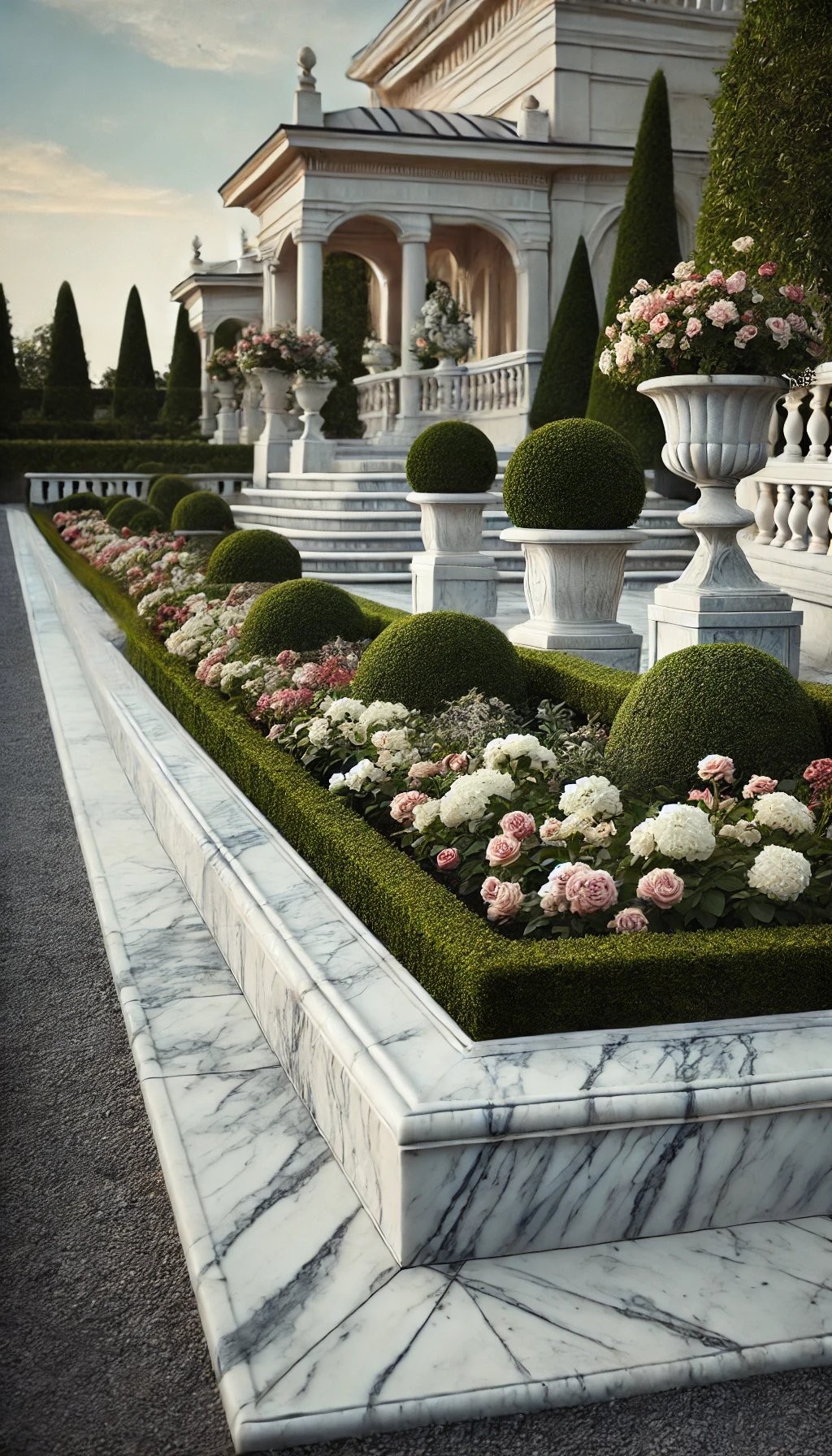

Marble edging brings an unparalleled air of refinement to outdoor spaces with its refined finish and striking veining patterns. To achieve a luxurious look, start by creating a level base and aligning the marble slabs or tiles side by side. This type of edging is particularly well-suited for formal gardens or those seeking to introduce a touch of upscale flair.
As landscape designer Emily Henderson notes, ‘Marble elevates the sophistication of any garden setting,’ making it an ideal choice for gardeners looking to elevate their outdoor space’s aesthetic.
Japanese Zen Garden Stones
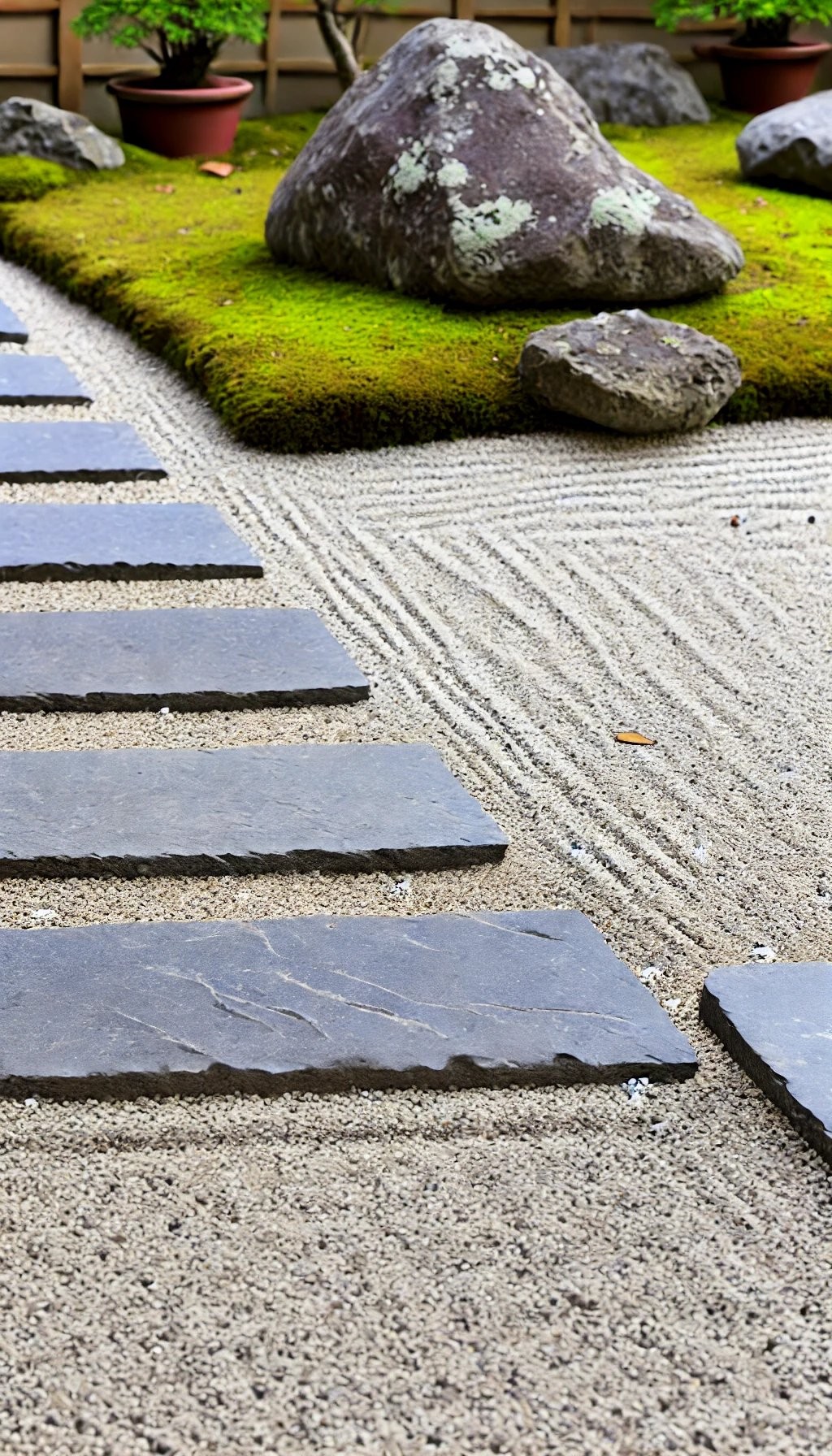
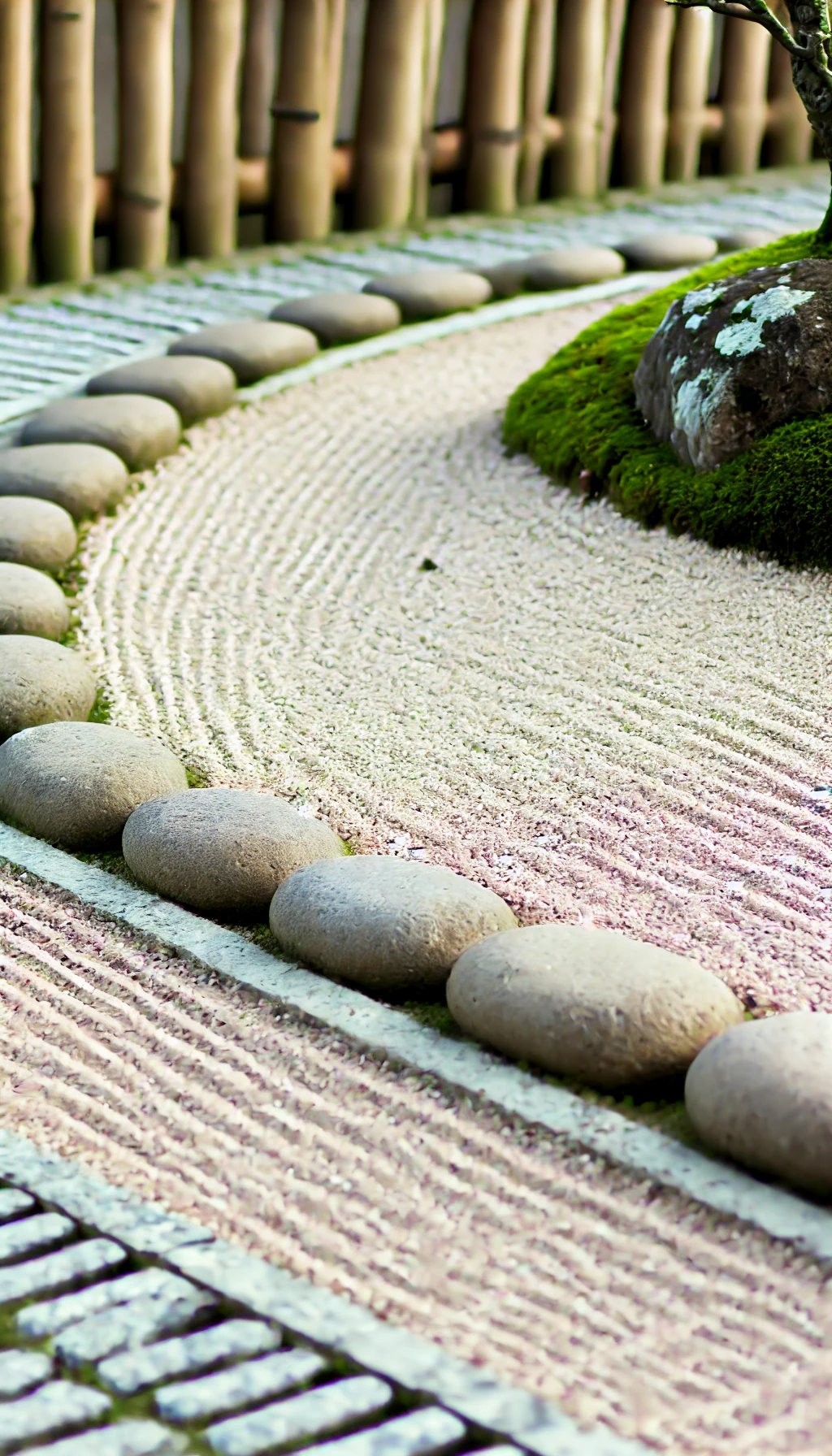
For those seeking serenity and calmness, Japanese Zen garden stones offer a thoughtful solution. Strategically placed to foster reflection and contemplation, these smooth, flat stones require careful arrangement in patterns that exude balance and tranquility. The deliberate placement of stones is just one element of a larger design philosophy, where the harmony between simplicity and nature takes center stage.
In conjunction with moss, sand, and minimalist plant life, Zen gardens create an oasis for relaxation, as expertly distilled by renowned gardener Kenji Yamada: ‘Zen gardens are about harmonizing simplicity and nature.’
Decorative Pebble Edging

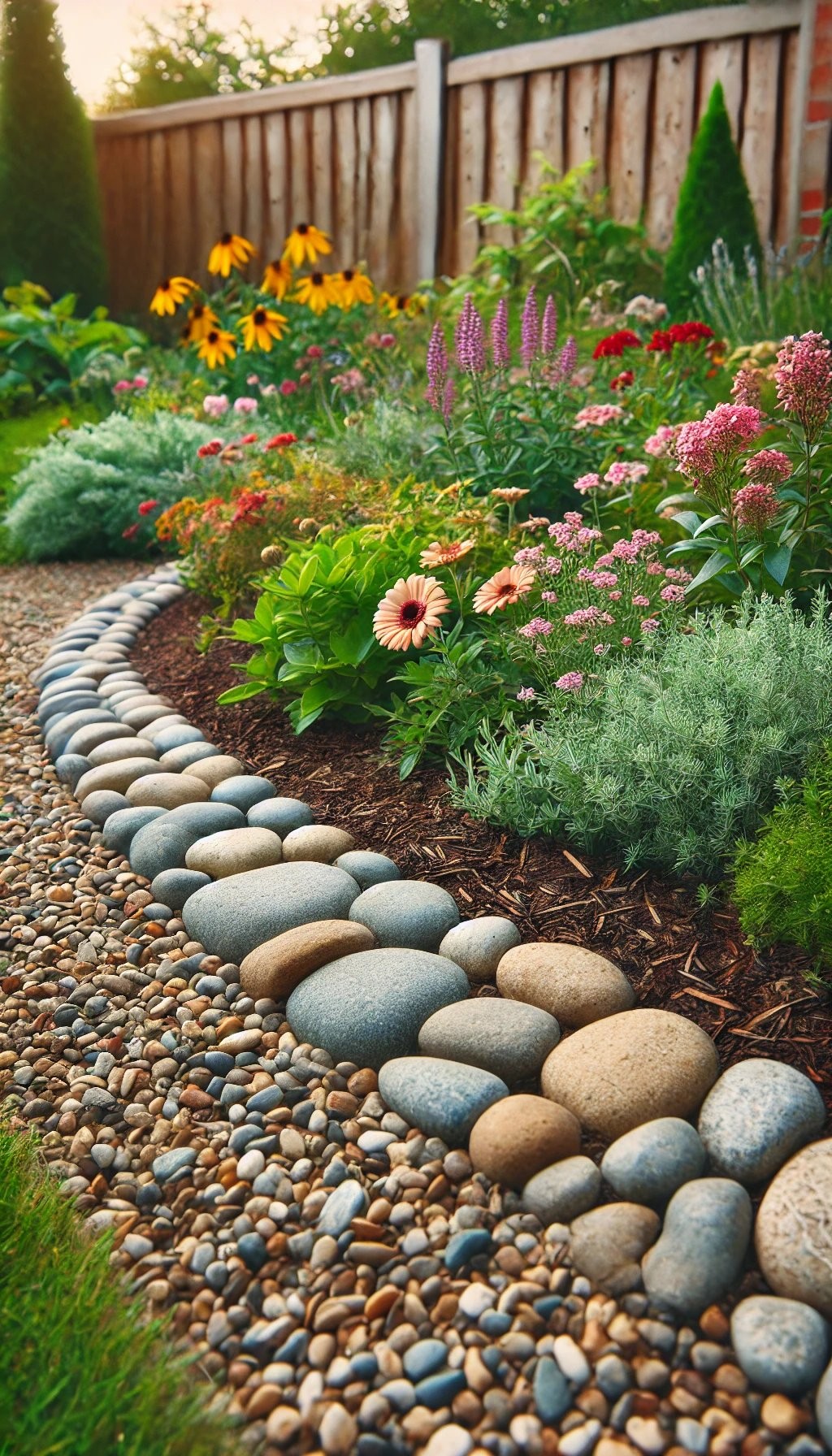
Transforming the boundaries of your garden with decorative pebble edging can add both visual appeal and practical functionality. This low-maintenance option creates a relaxed ambiance that’s easy to upkeep. To incorporate this feature into your outdoor space, simply spread a layer of pebbles along the edges of your pathways or flower beds. Its versatility makes it an excellent choice for various garden styles, particularly those embracing a natural or whimsical theme.
As noted by renowned garden designer Sara Bendrick, decorative pebbles bring a delightful blend of playfulness and orderliness to garden borders.
River Rock Edging
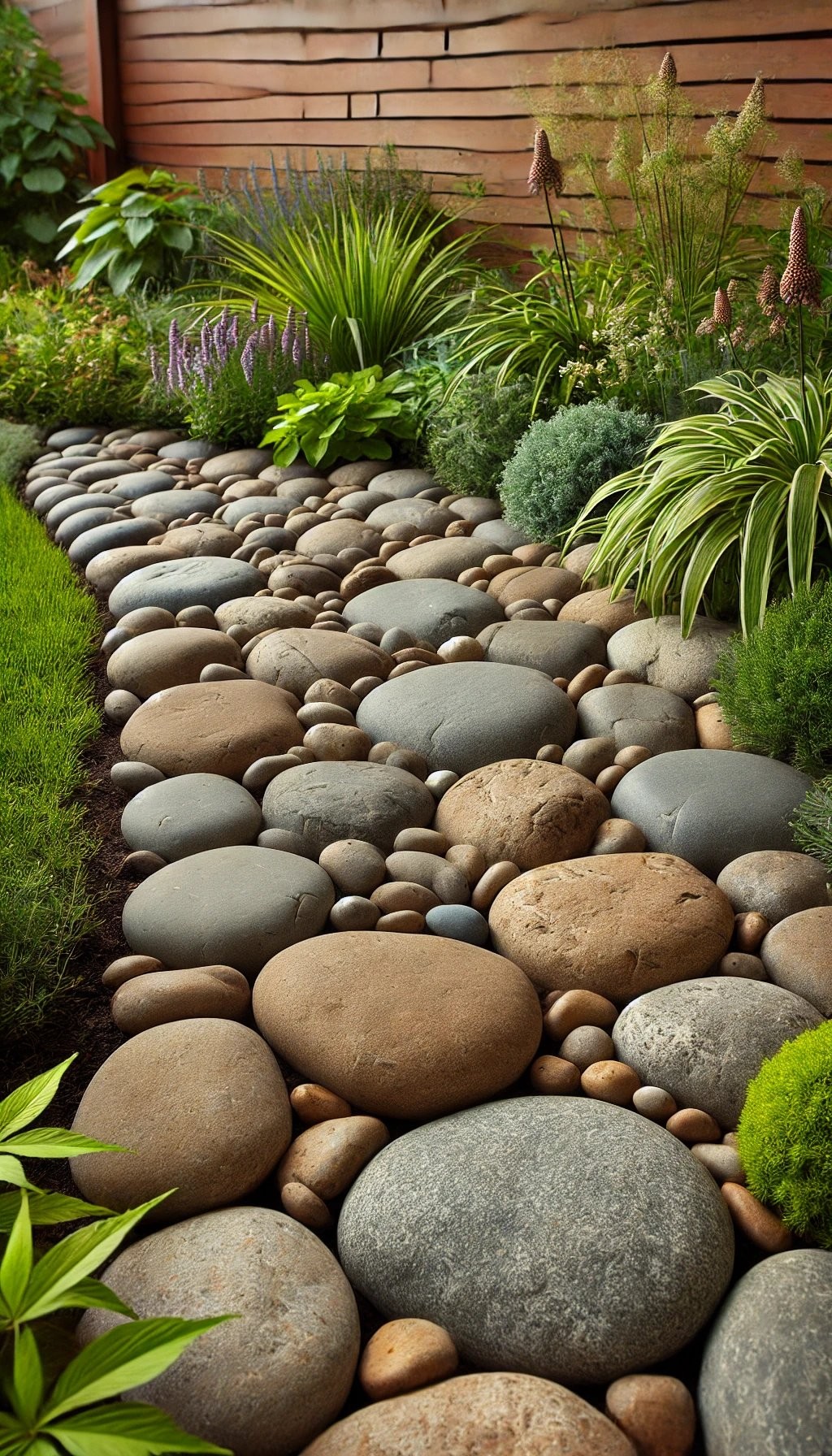
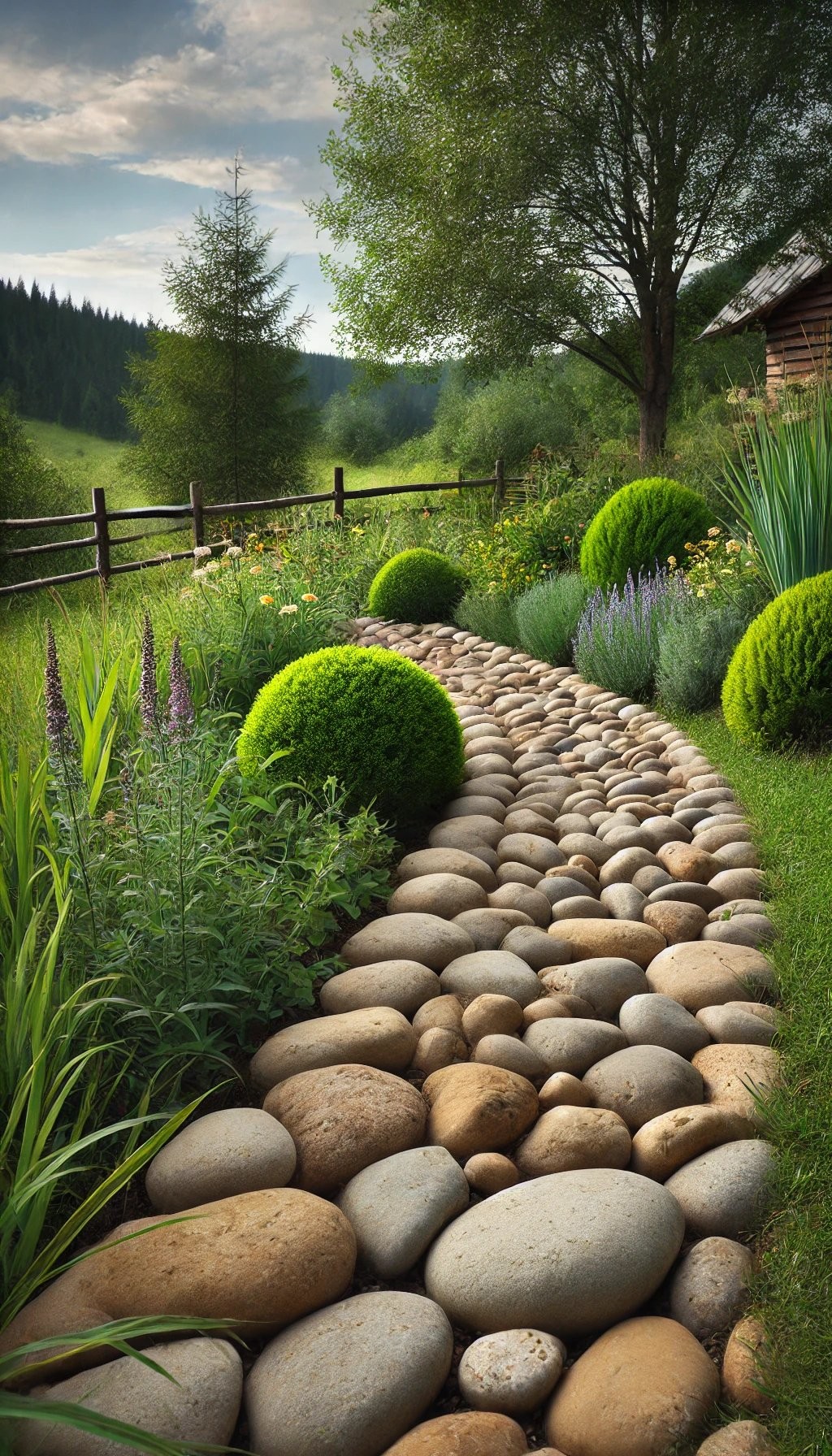
For those who prefer a more organic and harmonious aesthetic, river rock edging offers an ideal solution. This type of edging features smooth, rounded rocks that seamlessly blend with the surrounding landscape, creating a border that appears as if it’s been naturally formed over time.
Installation is relatively straightforward, involving the digging of a shallow trench and the placement of the rocks in close proximity to one another.
The result is a visually appealing and rustic-looking edging that complements woodland or naturalistic garden styles particularly well.
According to landscape architect Michael Garcia, river rocks are perfect for merging the garden with the natural world, creating a sense of cohesion and harmony between the two.
Stone Mosaic Edging
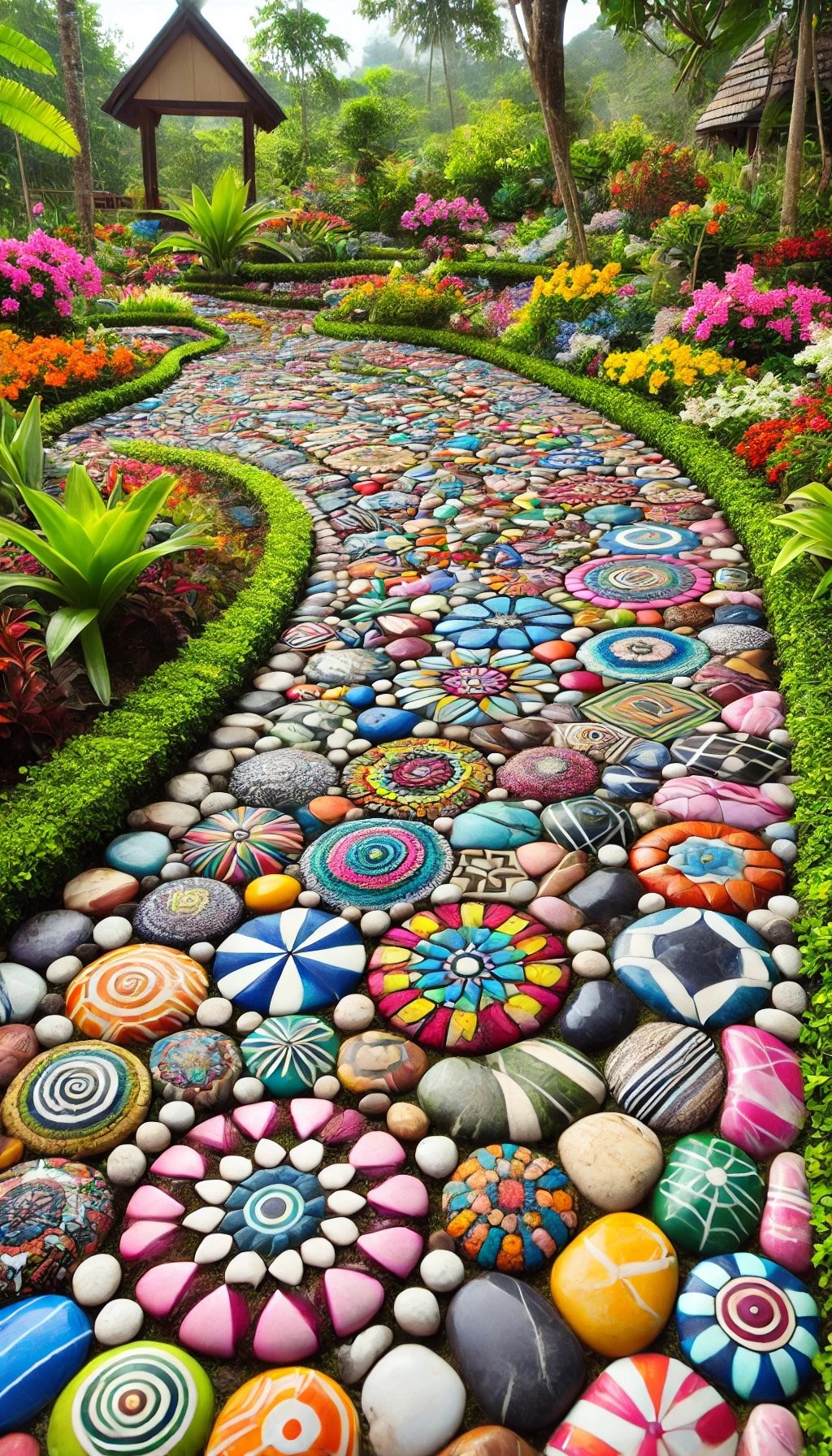

Transforming your garden borders into a masterpiece has never been easier than with stone mosaic edging. This unique technique involves meticulously arranging small stones in creative and colorful patterns to create a visually stunning effect. To begin, simply lay out your design along the edge of your garden beds, combining an assortment of stones in varying colors and shapes. Stone mosaics are particularly well-suited for gardens aiming to evoke a playful or artistic ambiance.
As landscape artist Laura Eubanks notes, ‘Using stone mosaics not only personalizes your garden but also infuses it with your artistic spirit.’
Stacked Stone Edging
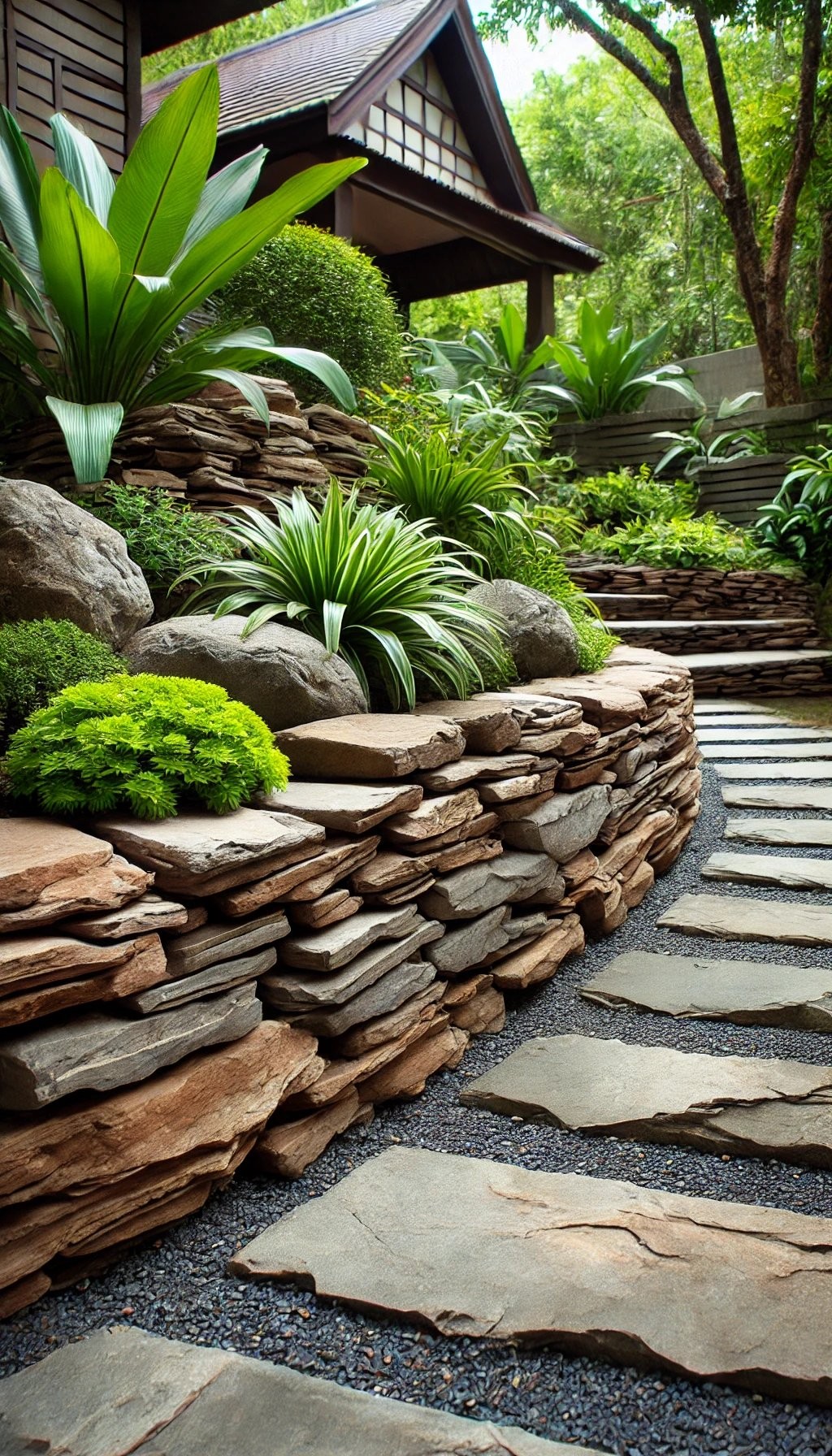

For gardeners seeking a rustic and long-lasting border solution, stacked stone edging is an excellent option. This method involves carefully arranging stones on top of each other to create a low wall that defines the perimeter of your outdoor space. The beauty of this approach lies in its simplicity – no mortar is required, as the stones are stacked in a way that ensures stability.
This natural-looking solution is particularly well-suited for xeriscapes or rock gardens, where a rugged and earthy ambiance is desired. According to garden architect Rick Anderson, stacked stone edging brings a timeless quality to garden edges, making it an attractive choice for those seeking a low-maintenance yet visually appealing border.
Dry Stack Stone Wall Edging
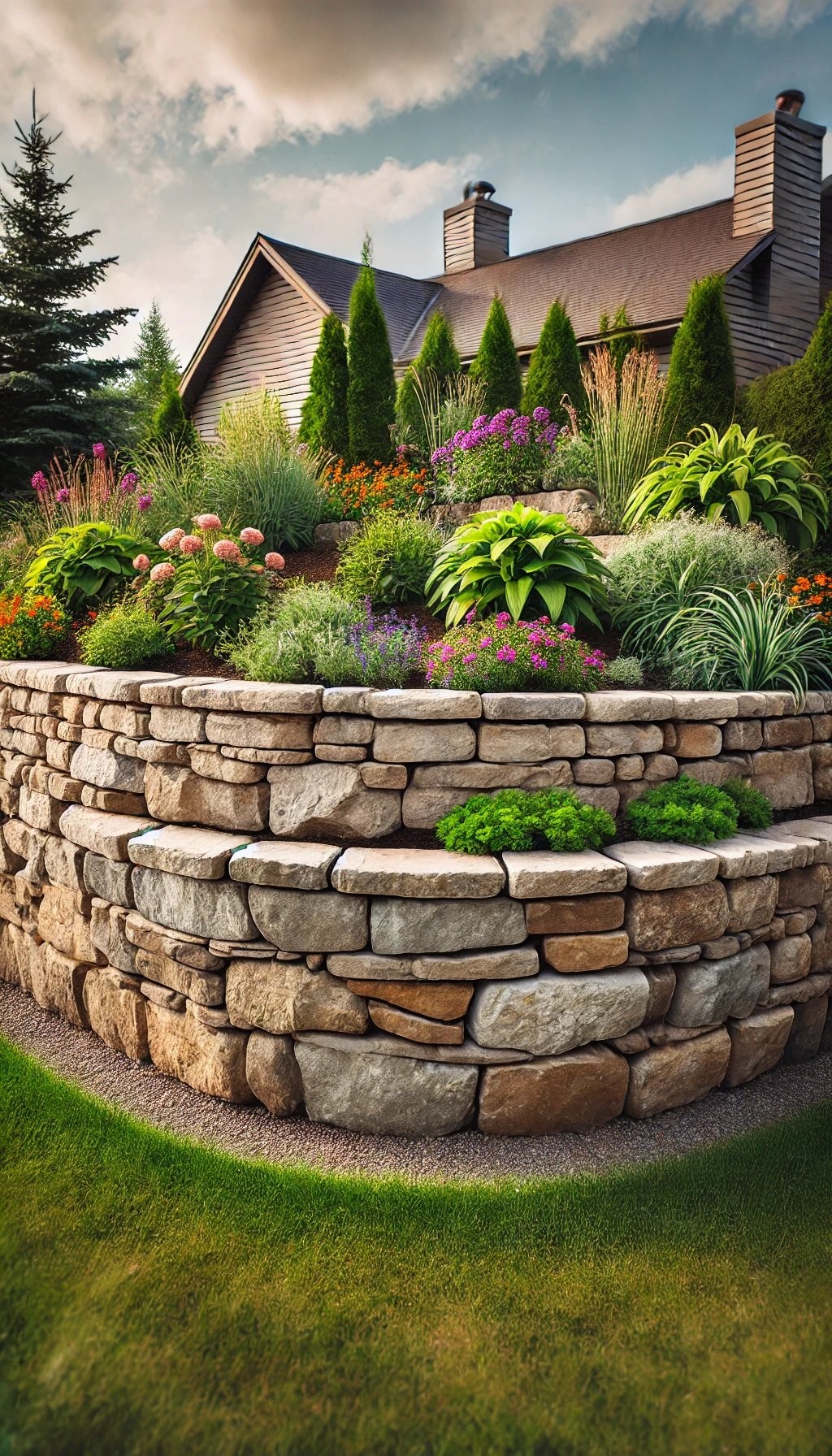
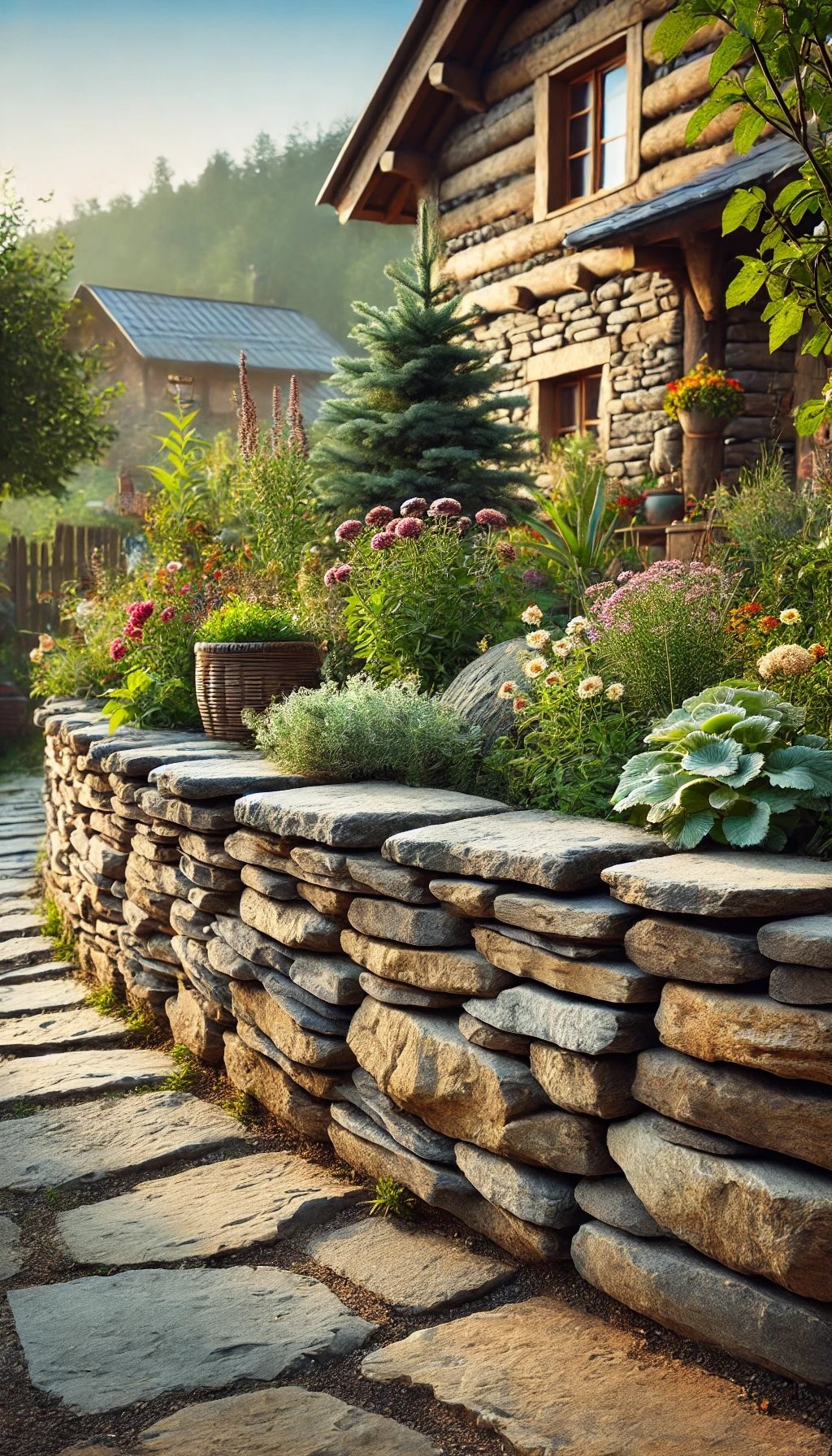
A dry stack stone wall edging is a meticulous process of stacking stones without mortar to create a natural and durable boundary. This type of edging is particularly well-suited for creating raised beds or defining different areas in your garden, making it an ideal choice for rustic or traditional garden styles. To build a successful dry stack stone wall, it’s essential to carefully select and place each stone so that they interlock and remain in place naturally.
As landscape designer Gareth Newman notes, not only do these walls enhance the overall landscape but also provide a solid, low-maintenance solution.
Conclusion
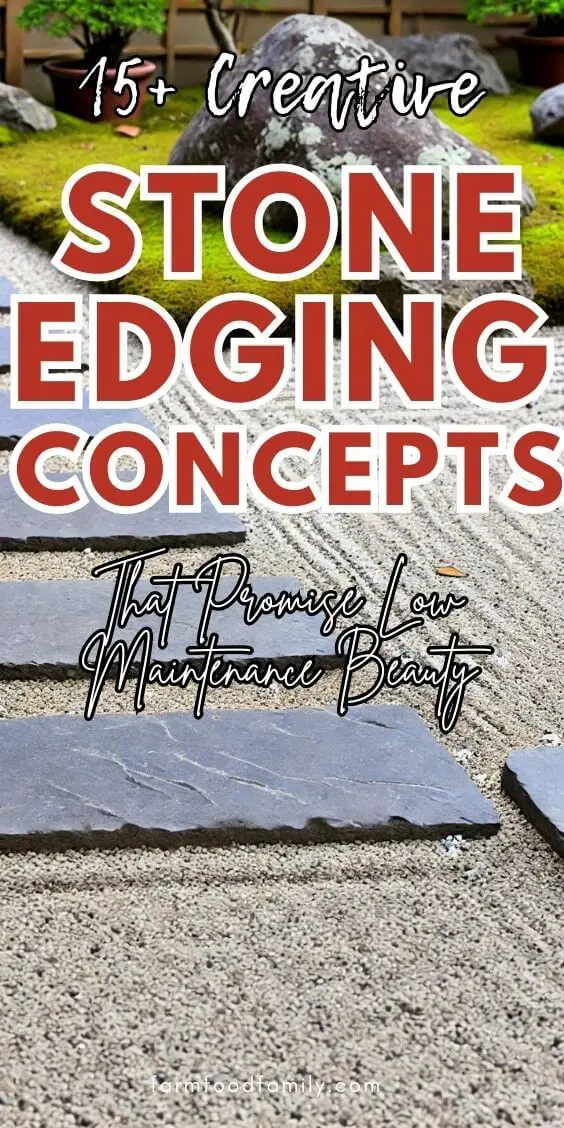
As the finishing touches are applied, it’s clear that each method of stone edging brings its own distinct advantages to the table. Whether you opt for the elegant allure of stone mosaic edging, the rugged charm of stacked stone edging, or the sturdy appeal of dry stack stone wall edging, these natural elements not only serve a practical purpose by controlling erosion and defining garden areas, but also make a significant contribution to the overall aesthetic of your outdoor environment.
By incorporating these stone edging techniques, you can create a cohesive and visually appealing landscape that reflects your personal style and meets your gardening needs. By embracing any one of these methods, you’ll be able to bring a touch of nature’s beauty and durability to your garden’s edges, ultimately transforming your outdoor space into a more inviting and well-defined area to enjoy.
FAQs about Stone Edging
What are the best stone edging ideas for small gardens?
When it comes to small gardens, using stone edging is a clever way to carve out separate areas and add visual appeal without sacrificing precious planting space. Two popular options for small garden owners are pebble and mosaic stones, which can be used to create narrow strips that still pack a decorative punch.
How do you install stone edging in a landscape design?
The process of installing stone edging is a multi-step endeavor that requires careful planning and execution. It begins with designing the layout of your stone border, taking into account factors such as the shape and size of the stones, the flow of water, and any obstructions or obstacles along the way. Once you have a clear vision for your design, it’s time to get your hands dirty!
Digging a trench along the desired border is the next step, which will serve as the foundation for your stone edging. From there, it’s simply a matter of laying the stones into the trench and securing them in place using soil or mortar, depending on the type of stone you’re working with and how permanent you want the installation to be.
What are the advantages of using natural stone versus manufactured stone for garden edging?
While natural stone’s textures and colors may be unrivaled in their ability to harmonize with the surrounding landscape, its enduring beauty is only rivalled by its exceptional durability. Moreover, this premium material can significantly boost a property’s value, making it an attractive investment for many homeowners. In contrast, manufactured stone may not boast the same natural allure, but it does offer a more uniform appearance and often at a lower cost.
Furthermore, its installation process is generally simpler, making it a viable alternative for those seeking to achieve similar aesthetic advantages without the premium price tag.
Can stone edging improve the drainage of garden beds?
While some types of stone edging, such as gravel or loose pebbles, can effectively enhance drainage by permitting water to percolate down through the intervening spaces, this unique characteristic has several benefits. Not only does it reduce soil erosion, but it also prevents the accumulation of waterlogged soil in garden beds, thereby maintaining a healthy and well-drained environment.
What are some creative ways to use stacked stone edging in a garden?
Using stacked stone edging can elevate your garden design in numerous ways. For instance, it can be employed to create raised planters that can house a variety of plants or flowers, thus adding visual appeal and functionality. Furthermore, it can be used to define pathways within the garden, separating different areas such as a patio from the lawn.
The versatility of stacked stone edging also allows for its use in creating boundaries between various sections of the garden, thereby adding depth and texture to the landscape. Moreover, allowing plant growth to flourish between the stones can further enhance their natural appearance, resulting in a lush and inviting atmosphere.



